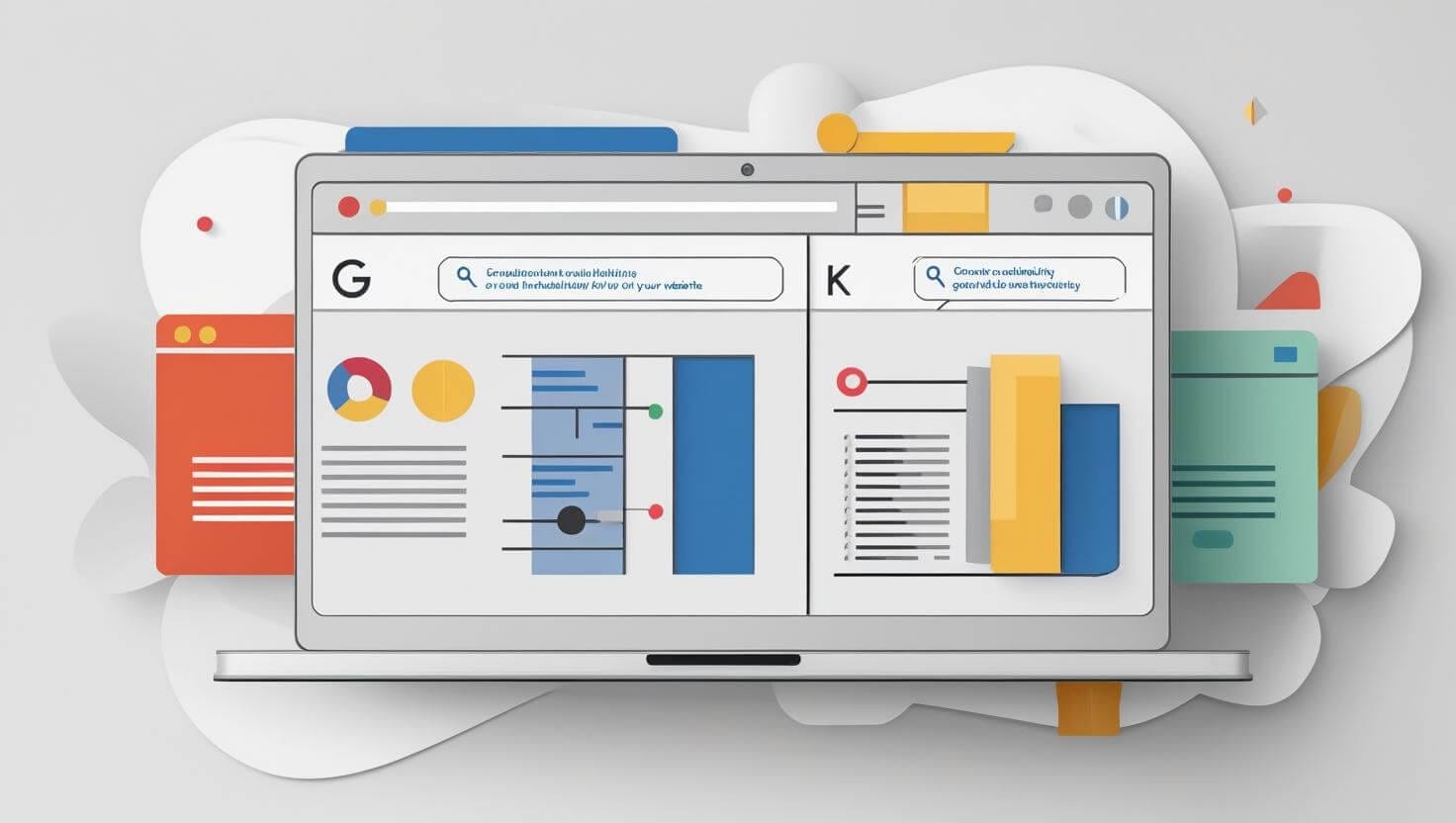Crawlability and Indexability: Why They’re Crucial for SEO Success in 2025

In 2025, crawlability and indexability are make-or-break essentials. You can write the most valuable content in your niche, but if search engines can’t crawl or index your pages, nothing will happen. These two factors form the backbone of your organic visibility.
This post breaks down exactly what these terms mean, why they matter, and how you can diagnose and fix the common problems that keep Google from discovering and ranking your content.
Crawlability and indexability are key to your technical SEO. If you are new to technical SEO, check out our step-by-step technical SEO guide to learn the basics and build a solid foundation.
What Is Crawlability?
Crawlability is your website’s ability to be discovered and accessed by search engine bots.
If Google’s crawlers can’t reach your site’s pages, they won’t appear in search results. When you launch a website, it’s not automatically visible to search engines. Crawlers, like Googlebot, need to “crawl” your site, following links from page to page, gathering data.
If these bots hit roadblocks, like broken links, incorrect robots.txt settings, or unoptimized internal linking, they may skip valuable content. That’s a huge missed opportunity.
Crawlability isn’t just about technical access. It’s about creating a structure that invites crawlers in and guides them clearly. You need a solid sitemap, clean site architecture, and optimized navigation.
The better bots can crawl, the better they can understand and rank your content in search results.
What Is Indexability?
Indexability is your website’s ability to be stored and listed in a search engine’s database after it’s crawled.
If crawlability is how Google finds your content, indexability is how it remembers it. You can have perfectly crawlable pages that still never show up in search results because they aren’t indexable.
This often happens when pages are blocked with a no-index tag, buried behind login walls, or served with the wrong status codes. If your pages aren’t indexable, they won’t rank.
Simply put: without indexability, you’re invisible.
How Do Crawlability And Indexability Affect SEO?
Crawlability and indexability are the foundation of SEO success. If search engines can’t crawl or index your site, nothing else matters. You could have the best content in your niche, amazing page speed, or a killer backlink profile. But if Google can’t crawl your pages or add them to its index, your site won’t appear in search results.
Crawlability affects how easily search engines discover your content. Think of it as Google’s first impression of your site. If your technical setup blocks crawlers with broken links, orphan pages, or poor internal linking, you’re putting up walls that stop bots in their tracks. This reduces how often and how deeply your site is crawled. New pages may take longer to show up or may never be discovered at all.
Indexability picks up where crawlability leaves off. Once crawlers access a page, it must meet specific criteria to be stored in the search engine’s index. If your pages use noindex tags, return 404 errors, or serve duplicate content, they may be excluded from the index entirely. This results in no visibility.
You need both crawlability and indexability to succeed in modern SEO. They work together to help search engines find, understand, and rank your content.
How To Find Crawlability And Indexability Issues?
Now that you understand how crawlability and indexability affect SEO, it’s time to diagnose potential problems.
You don’t want to wait until traffic drops or rankings tank before taking action. Finding these issues early helps you fix them before they block your content from getting the attention it deserves.
Start With Google Search Console
Google Search Console (GSC) is your go-to tool for spotting crawlability and indexability issues. It’s free, accurate and built by Google.
Here’s what to check:
- Coverage Report: This shows which pages are indexed, which are excluded, and why. Look out for errors like “Crawled – currently not indexed”, “Blocked by robots.txt”, or “Soft 404”.
- URL Inspection Tool: Plug in any URL to see if it’s crawlable, indexed, and when Google last visited it.
- Sitemaps: Submit a sitemap and monitor how many pages Google finds versus how many it indexes.
These reports highlight whether Google is seeing your site as you intended or getting stuck.
Use Screaming Frog for Full Site Crawls
If you want to dig deeper, use a tool like Screaming Frog. It simulates what a search engine bot sees as it crawls your site.
With these tools, you can:
- Identify broken internal links that stop crawlers in their tracks
- Spot pages missing meta robots tags or using noindex by mistake
- Find redirect chains or loops that confuse bots
- Highlight orphan pages with no internal links pointing to them
Run a crawl regularly, especially after site updates or redesigns. You’ll catch crawl roadblocks before they cost you rankings.
Check Robots.txt & Meta Robots Tags
A misconfigured robots.txt file or careless use of meta robots tags can destroy your crawlability and indexability without you noticing.
- Use the robots.txt Tester in GSC to check if you’re unintentionally blocking important sections.
- Review meta robots tags for values like noindex, nofollow, or noarchive—especially on templates and CMS-generated pages.
One stray line can tell bots to ignore your entire blog.
Analyze Crawl Stats & Server Logs
If you want to go pro, dive into your Crawl Stats in GSC and your server logs.
- Crawl Stats show how often and how deep Google is crawling your site. Sudden drops in crawl frequency? That’s a red flag.
- Server logs tell you exactly what URLs bots are hitting. If important URLs never show up, they’re likely being skipped.
This level of insight helps you connect technical performance with SEO outcomes.
Test Mobile & Speed Factors
In 2025, Google’s bots are mobile-first. If your site doesn’t work well on mobile, it may not be fully crawled or indexed.
- Use Google’s Mobile-Friendly Test and PageSpeed Insights to catch issues that impact crawl efficiency.
- Mobile usability errors can block JavaScript content, which may hide important page elements from bots.
4 Ways To Optimize Crawlability And Indexability?
If you want consistent organic traffic, you need to make it as easy as possible for search engines to find and store your pages. Here are four essential steps to help you take control of your crawlability and indexability.
1. Submit Sitemap To Google Search Console
If you’re not submitting your sitemap to Google Search Console, you’re wasting opportunities. A sitemap is like a roadmap for search engines. It tells Google exactly where your most important pages live and invites them to crawl.
Why it matters:
Without a sitemap, Google relies on internal links and backlinks to discover your pages. A sitemap speeds up indexing and helps ensure no key page is overlooked.
Here’s how to do it right:
- Create a clean, XML sitemap using tools like Yoast (for WordPress), Screaming Frog, or XML-Sitemaps.com.
- Include only index-worthy pages. Don’t list thin, duplicate, or blocked URLs.
- Keep it under 50,000 URLs and 50MB uncompressed—or split it into multiple sitemaps.
- Submit it in GSC under “Sitemaps” and monitor the index coverage regularly.
By submitting your sitemap and keeping it up to date, you make Google’s job easier.
2. Strengthen Your Internal Linking Structure
Internal linking isn’t just about user navigation. It’s critical for crawlability and indexability. If Googlebot finds one page, it follows those links to discover others. Poor internal linking breaks that flow.
Without a solid internal linking structure, you end up with orphan pages (content that no crawler ever finds). That means no indexing, no ranking, and zero value.
Here’s how to fix that:
- Link to every important page at least once. No orphan pages, period.
- Use descriptive anchor text. Help Google understand the context of the link.
- Keep your click depth shallow. Pages buried more than 3 clicks deep may not get crawled regularly.
- Use hub pages to group related content and create topical relevance.
For example, if you have a cornerstone page on “technical SEO.” Link to that from related blog posts, your homepage, and even the footer. Then, make sure that page links out to deeper articles like “how to audit crawl errors” or “fixing indexation issues.”
Tools to help:
- Screaming Frog: Spot orphaned pages or weak internal linking.
- Ahrefs or SEMrush: Analyze internal link distribution and identify low-authority pages.
When you optimize internal linking, you turn your site into a crawler-friendly ecosystem. Bots will glide from page to page without friction.
3. Update And Add New Content
Google loves fresh content. But it’s not just about new articles. Updated pages are also crawl magnets. If your content is stale, crawlers may visit less often. That delays indexation and weakens ranking potential.
Why content freshness matters:
Search engines prioritize active, evolving websites. When you publish regularly and update older pages, you signal that your site is alive and worth crawling.
How to stay fresh:
- Update existing content with new stats, insights, and keywords. Don’t just change a date—add value.
- Republish evergreen posts after refreshing them. Change the date, improve the content, and re-promote.
- Create new content consistently. Even once a month can keep bots coming back.
- Link new posts internally. Tie them into your existing content to maximize crawl flow.
By keeping your content ecosystem active, you improve crawl frequency and increase the chances that every page gets indexed faster.
4. Avoid Duplicate Content
Duplicate content kills indexability. Google doesn’t want to store or rank the same content multiple times. If your site serves duplicates, some pages may be excluded from the index.
Why this happens:
- Same content accessible via multiple URLs (e.g., /product/, /product/index.html, /product/?ref=123)
- HTTP vs. HTTPS or www vs. non-www conflicts
- Copied blocks of content across category pages or blog templates
- Poor use of canonical tags or none at all
Here’s how to fix and prevent it:
- Use canonical tags correctly to tell Google which version of a page to index.
- Consolidate thin variations (like product filters or tag archives) that create similar content.
- Avoid boilerplate blocks—customize descriptions, intros, and metadata for each page.
- Check for scraper issues. If others copy your content, your original version may not get indexed.
Remember: If two pages compete for the same keyword with the same content, Google might choose neither.
Build With Bots In Mind
In 2025, Google’s algorithms are smarter, faster, and pickier. If your site isn’t optimized for crawlability and indexability, it doesn’t matter how great your content is. It won’t get seen.
So take action today:
- Submit your sitemap and monitor it like a hawk.
- Tighten your internal linking and eliminate orphan pages.
- Keep your content fresh, alive, and relevant.
- Audit your site for duplication and enforce a clean, canonical structure.
When you help search engines do their job, they reward you with better visibility, faster indexation, and higher rankings.
3 Tools To Help You Improve Crawlability And Indexability
1. Screaming Frog
Screaming Frog is a desktop-based SEO spider that mimics search engine crawlers to scan your entire website. Unlike browser-based tools, it sees your site the way bots do. This is critical when diagnosing hidden crawl issues that impact indexability.
With Screaming Frog, you can:
- Simulate a full crawl just like Googlebot, revealing how your site structure looks to search engines.
- Identify broken internal links that stop crawl paths dead in their tracks.
- Spot incorrect or missing meta robots tags that may block indexing unintentionally.
- Locate redirect chains and loops, which confuse bots and waste crawl budget.
- Find orphan pages—those that no internal links lead to and Google likely never finds.
- Audit canonical tags, hreflang, pagination, and status codes at scale.
Run Screaming Frog regularly, especially after major changes or site migrations.
2. Google Search Console
Google Search Console (GSC) is non-negotiable. It’s free, straight from Google, and shows exactly how their bots view your site. While Screaming Frog reveals what could be happening, GSC shows what is happening in Google’s crawl and index behavior.
Use GSC to:
- Check the Coverage Report, which flags pages that are excluded and explains why (noindex, crawl anomalies, soft 404s, etc.).
- Use the URL Inspection Tool to see if a specific page is indexed, crawlable, and when it was last visited.
- Submit and monitor your XML sitemap, ensuring all key URLs are being discovered and indexed.
- Monitor Crawl Stats, which show how often and how deep Google is crawling your site over time.
- Test your robots.txt file, making sure you’re not unintentionally blocking important content.
If there’s a mismatch between what you think is indexable and what’s actually indexed, GSC will show it.
3. Ahrefs Site Audit
Ahrefs Site Audit combines technical crawl data with actionable SEO insights, making it especially useful for strategists and marketers.
With Ahrefs Site Audit, you’ll be able to:
- Spot crawl errors, noindex pages, and broken links, all categorized by urgency and severity.
- Audit internal link flow, identifying pages with too few or too many internal links.
- Review on-page SEO elements, such as duplicate titles, missing meta descriptions, and thin content.
- Track changes over time with historical comparisons—ideal for measuring the impact of your fixes.
- Segment crawl results by URL type, status code, or crawl depth to diagnose structural issues fast.
Ahrefs makes crawlability and indexability part of a bigger SEO picture, helping you balance technical health with strategy.


